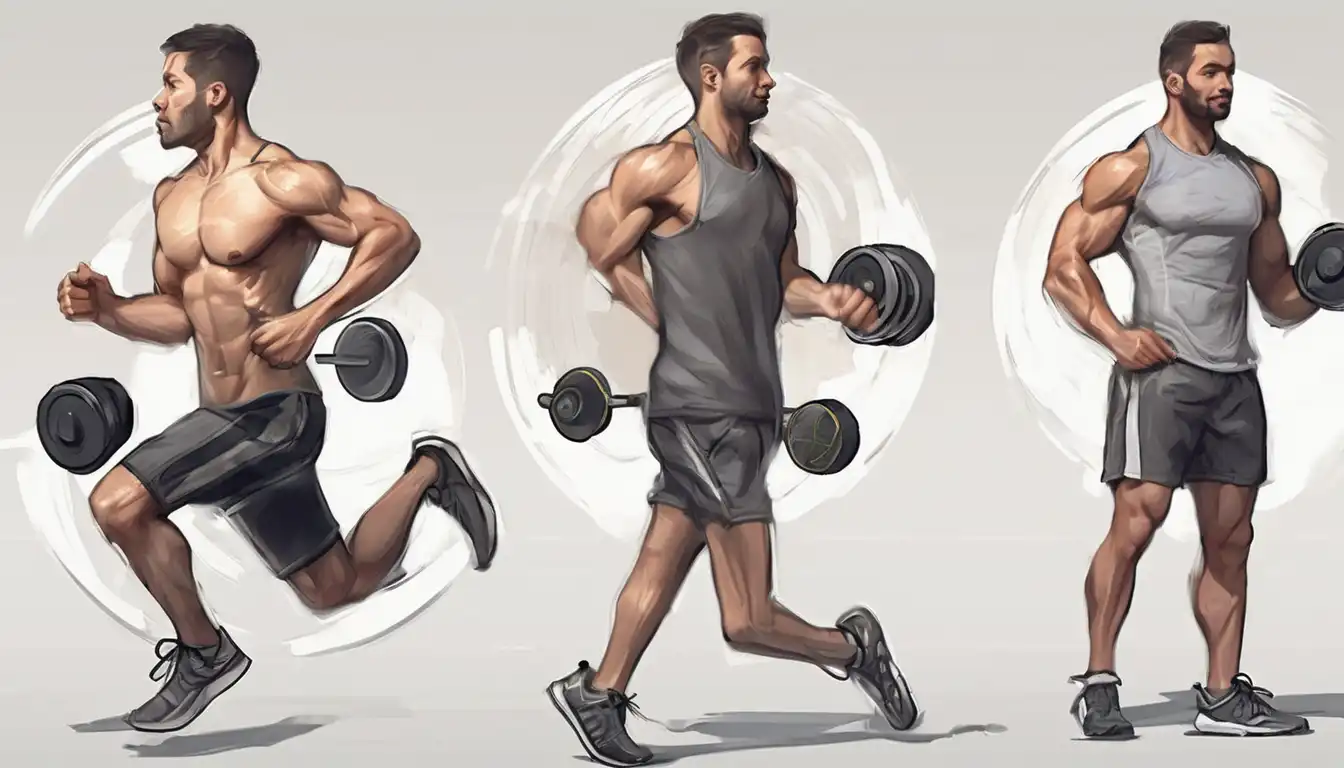Getting Started: Your Fitness Journey Begins Here
Embarking on a fitness journey can feel overwhelming, but with the right approach, anyone can build a sustainable workout routine that delivers real results. Whether you're looking to lose weight, build strength, or simply improve your overall health, this comprehensive guide will walk you through every step of creating and maintaining an effective fitness plan.
Why Starting Right Matters
Many beginners make the mistake of diving into intense workouts without proper preparation, leading to burnout or injury. Taking the time to establish a solid foundation ensures long-term success and makes your fitness journey enjoyable rather than stressful. Research shows that people who start with gradual, structured programs are 3 times more likely to maintain their routine long-term.
Setting Realistic Goals
Before you even think about exercises, you need to define what success looks like for you. SMART goals (Specific, Measurable, Achievable, Relevant, Time-bound) provide the framework for sustainable progress. Instead of vague goals like "get fit," aim for specific targets such as "lose 10 pounds in 3 months" or "run a 5K without stopping."
Assessing Your Current Fitness Level
Honest self-assessment is crucial for creating an appropriate starting point. Consider these factors:
- Current activity level (sedentary, lightly active, etc.)
- Any existing health conditions or injuries
- Time availability for workouts
- Equipment access (home vs. gym)
Building Your First Workout Schedule
A balanced routine typically includes cardiovascular exercise, strength training, and flexibility work. For beginners, starting with 3-4 sessions per week allows for adequate recovery while building consistency.
Sample Beginner Weekly Schedule
- Monday: 30-minute brisk walk or light cardio
- Wednesday: Full-body strength training (bodyweight exercises)
- Friday: 30-minute cardio session
- Sunday: Active recovery (yoga or stretching)
Essential Equipment for Beginners
You don't need expensive gear to get started. Focus on these basics:
- Comfortable workout clothes and proper shoes
- Water bottle for hydration
- Exercise mat for floor work
- Resistance bands (versatile and affordable)
Fundamental Exercises Every Beginner Should Master
Proper form is more important than heavy weights when starting out. These foundational movements build strength safely:
Bodyweight Strength Exercises
Start with 2-3 sets of 10-15 repetitions for each exercise:
- Squats: Builds lower body strength
- Push-ups: Develops upper body and core
- Planks: Core stabilization
- Glute bridges: Activates posterior chain
Cardiovascular Options
Choose activities you enjoy to maintain motivation:
- Brisk walking or hiking
- Cycling (stationary or outdoor)
- Swimming or water aerobics
- Dance workouts or aerobics classes
Nutrition: Fueling Your Fitness Journey
Exercise alone isn't enough - proper nutrition supports your efforts and accelerates results. Focus on balanced meals with lean proteins, complex carbohydrates, healthy fats, and plenty of vegetables. Hydration is equally important; aim for 8-10 glasses of water daily, increasing intake around workouts.
Pre- and Post-Workout Nutrition
Timing your meals can optimize performance and recovery:
- Pre-workout: Light snack 30-60 minutes before (banana, yogurt)
- Post-workout: Protein and carbs within 2 hours (chicken with sweet potato)
Overcoming Common Beginner Challenges
Every fitness journey encounters obstacles. Being prepared helps you push through:
Dealing with Muscle Soreness
DOMS (Delayed Onset Muscle Soreness) is normal when starting out. Manage it with light activity, proper hydration, and adequate sleep. The soreness typically diminishes after the first few weeks as your body adapts.
Staying Motivated
Motivation naturally fluctuates. Build consistency with these strategies:
- Track your progress with a fitness journal
- Find a workout buddy for accountability
- Celebrate small victories along the way
- Mix up your routine to prevent boredom
Progressing Safely: When to Increase Intensity
As your fitness improves, gradually challenge yourself to continue seeing results. The 10% rule is a safe guideline: increase duration, intensity, or weight by no more than 10% per week. Listen to your body - some discomfort is normal, but sharp pain indicates you should back off.
Signs You're Ready to Level Up
- Exercises feel noticeably easier
- You recover faster between sessions
- You have energy for additional activity
- Current routine no longer challenges you
Creating Long-Term Sustainability
The ultimate goal isn't just starting a fitness routine - it's making fitness a permanent part of your lifestyle. Focus on building habits rather than pursuing quick fixes. Remember that consistency beats intensity every time; showing up regularly, even for shorter workouts, yields better long-term results than sporadic intense sessions.
Building a Support System
Surround yourself with positive influences:
- Join fitness communities or classes
- Share your goals with supportive friends
- Consider working with a personal trainer initially
- Follow inspirational but realistic fitness accounts
Final Thoughts: Your Journey, Your Pace
Starting a fitness routine is one of the most rewarding decisions you can make for your health. Remember that everyone's journey looks different - comparison is the thief of joy. Focus on your own progress, be patient with yourself, and celebrate every step forward. The most important workout is the one you actually do, so find activities you enjoy and make fitness a positive part of your life rather than a chore.
Ready to take the next step? Check out our guide on mastering proper exercise form to ensure you're building strength safely and effectively. For more beginner-friendly workout ideas, explore our collection of home exercise routines that require minimal equipment.
